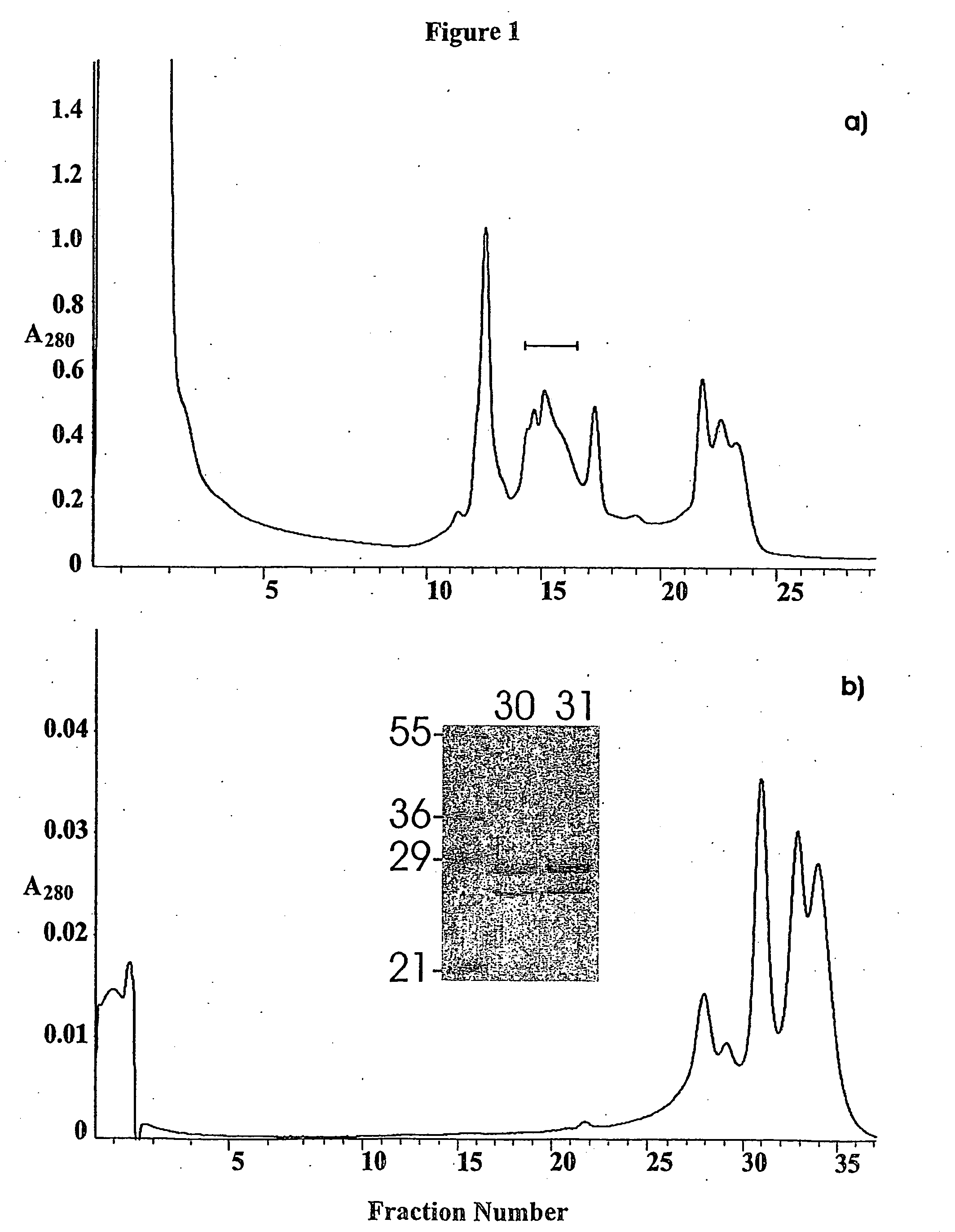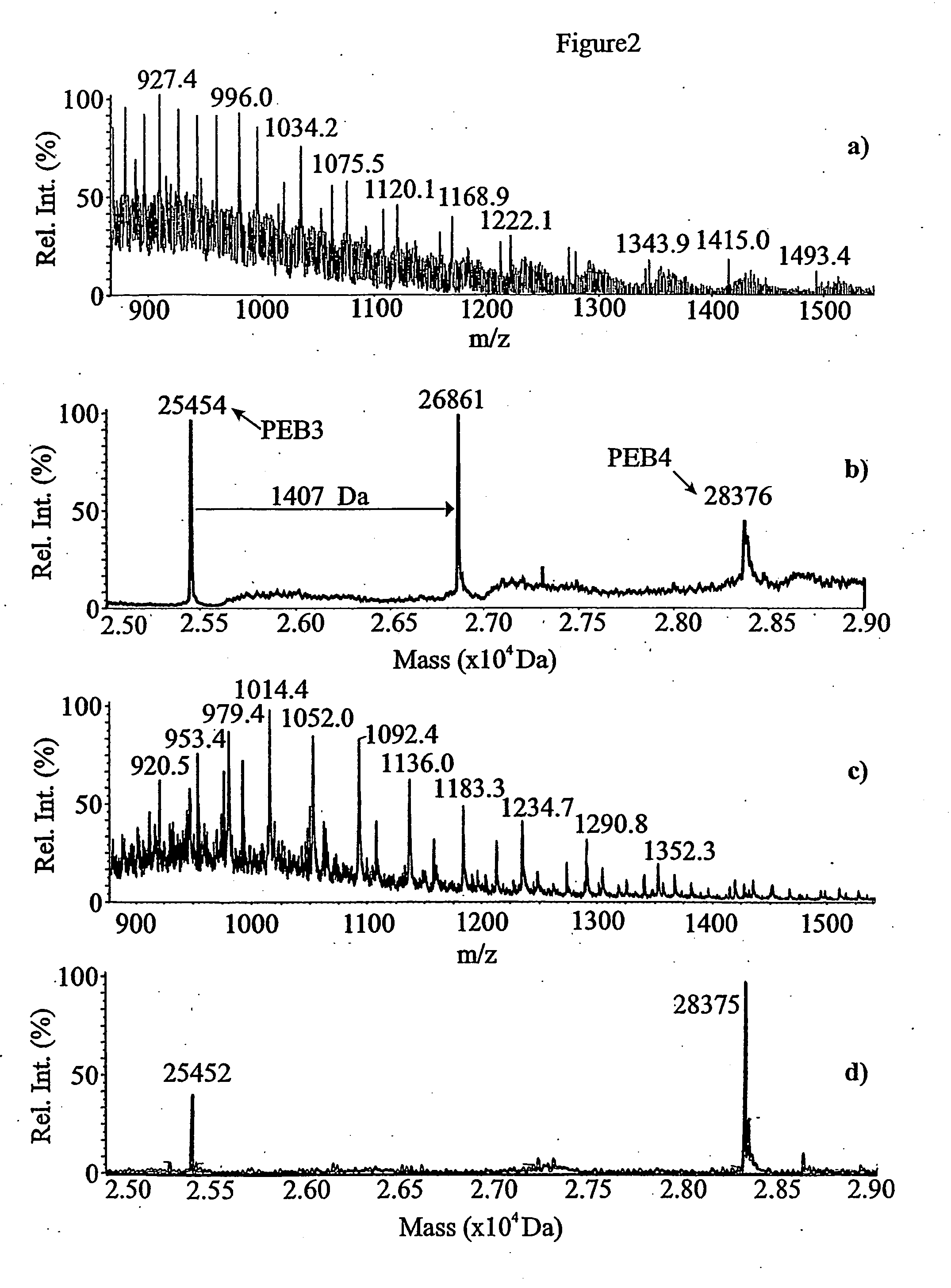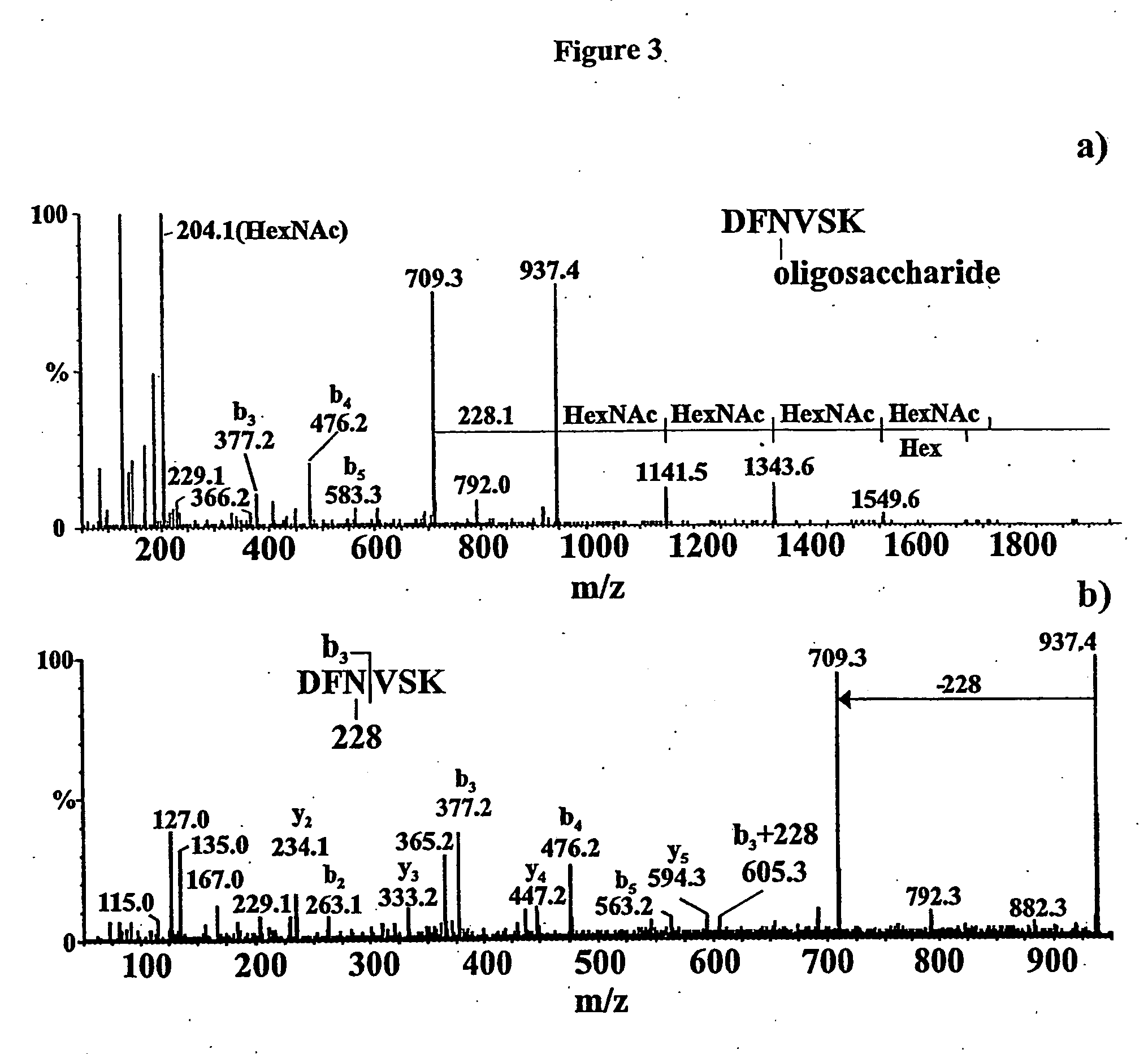Campylobacter glycans and glycopeptides
a glycoprotein and glycoprotein technology, applied in the field of bioactive glycoproteins and glycan moieties of glyocoproteins, can solve the problems of loss of immunogenicity in multiple proteins, and achieve the effect of preventing ground water contamination and eliminating or reducing the presence of pathogens
- Summary
- Abstract
- Description
- Claims
- Application Information
AI Technical Summary
Benefits of technology
Problems solved by technology
Method used
Image
Examples
example 1
Purification and Characterization of PEB3
[0055] PEB3 protein (Cj0289c) was identified in 2D gels of a glycine extract by peptide mass fingerprinting, as a component of a group of spots focussing within a range of pH 9-10 (results not shown). PEB3 was purified from the extract by cation exchange chromatography, and re-fractionated on the same column, using a shallower NaCl gradient, resulted in the PEB3 appearing in three fractions (FIG. 1). SDS-PAGE analysis showed two bands, whose N-terminal sequences were determined following their transfer to a PVDF membrane. Ten cycles of sequencing identified the lower mass species as PEB3 while the higher mass, more abundant component, was also PEB3 with a minor sequence corresponding to PEB4 (Cj0596).
[0056] The mass spectrum and the reconstructed molecular mass profile for fraction # 31 are presented in FIG. 2a) and b). Three peaks were observed in the reconstructed mass profile. The peaks at 25,454 Da and 28,376 Da correspond well with the...
example 2
Characterization of the Glycopeptide Linkage
[0057] The PEB3 tryptic peptide to which the oligosaccharide is attached contains sites for both N- and O-linkage, ie Asn and Ser. Therefore, it was necessary to carry out further experiments to determine the nature of this linkage. Previously, we have used β-elimination to remove O-linked carbohydrates from the flagellin of C. jejuni 81-176 (5). However, this procedure failed to remove the oligosaccharide in this instance. This was our first indication that the oligosaccharide is N-linked. This was confirmed by MS / MS analysis of the singly protonated fragment ion at m / z 937.0 produced by front-end collision-induced dissociation of the intact glycopeptide (FIG. 3b). This ion is composed of the tryptic peptide plus the unusual 228 Da sugar only. An ion was observed at m / z 605.1 which could only be assigned to the b3 fragment ion plus the 228 Da sugar moiety. No fragment ions were observed to suggest that the carbohydrate is linked to the s...
example 3
Isolation and Identification of Glycoproteins
[0058] Putative glycoproteins were purified by SBA affinity chromatography from the glycine extracts of 40 g wet weight of cells. The yield of putative glycoproteins was 5 mg as estimated by UV absorbance at 280 nm. The GalNAc eluant was subjected to 1D- and 2D-PAGE (FIG. 4) and to ensure that the proteins purified in this manner possessed lectin binding properties, rather than non-specific binding characteristics, western blotting with an SBA / alkaline phosphatase conjugate was also carried out. Approximately 13 protein species were visualized following 1D SDS-PAGE but this number increased substantially when the product was analyzed by 2D-PAGE. The proteins in individual bands from 1D SDS-PAGE and spots from 2D-PAGE were identified by mass fingerprinting and database searching (Table I). Among the identified proteins are PEB3 (Cj0829c) and CgpA (Cj1670c) previously identified by Linton et al. (8). The vertical pattern of spots with iden...
PUM
| Property | Measurement | Unit |
|---|---|---|
| Composition | aaaaa | aaaaa |
| Immunogenicity | aaaaa | aaaaa |
Abstract
Description
Claims
Application Information
 Login to View More
Login to View More - R&D
- Intellectual Property
- Life Sciences
- Materials
- Tech Scout
- Unparalleled Data Quality
- Higher Quality Content
- 60% Fewer Hallucinations
Browse by: Latest US Patents, China's latest patents, Technical Efficacy Thesaurus, Application Domain, Technology Topic, Popular Technical Reports.
© 2025 PatSnap. All rights reserved.Legal|Privacy policy|Modern Slavery Act Transparency Statement|Sitemap|About US| Contact US: help@patsnap.com



